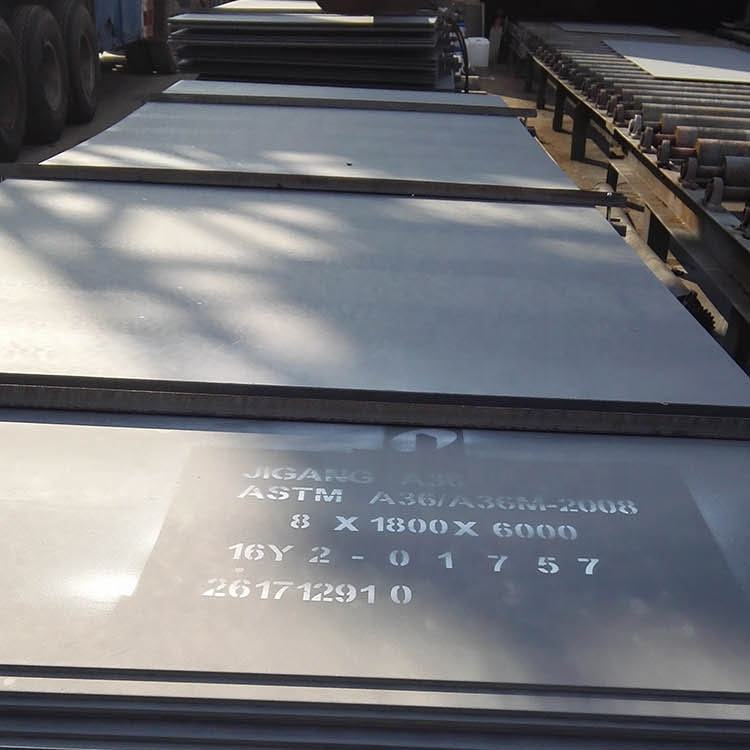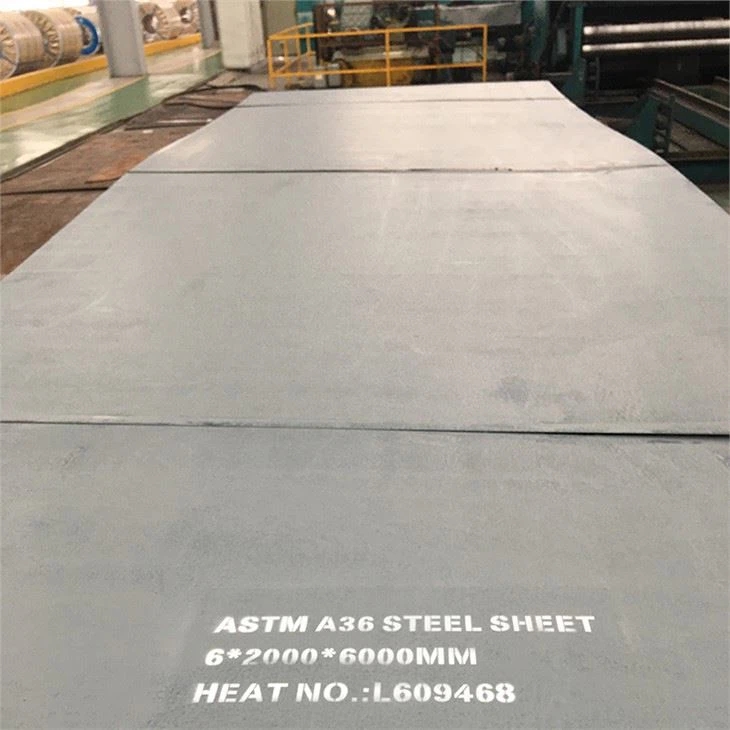
Privacy statement: Your privacy is very important to Us. Our company promises not to disclose your personal information to any external company with out your explicit permission.
Overview of ASTM A36 Steel Plate
ASTM A36 steel, a widely employed structural steel in the United States, boasts economic viability, widespread availability, and ease of welding. Its robustness and flexibility suit a broad spectrum of applications, including bridges, buildings, automotive components, construction equipment, and machinery parts. DIY enthusiasts also favor it for its exceptional weldability, enabling metal project fabrication or repair sans professional welding services.
Properties of ASTM A36 Steel Plates
ASTM A36 steel plate exhibits outstanding welding properties, making it a preferred choice for welded structures like bridges and buildings. With a yield strength of 36,000 psi and a tensile strength ranging from 58,000 to 80,000 psi, it offers formidable structural integrity. Plates up to 200mm thick boast a 20% elongation at break. Notably, it maintains good notch toughness at low temperatures and is amenable to molding processes.
Comprising carbon, manganese, phosphorus, sulfur, and silicon, the steel plate typically contains 0.25% carbon, 0.4% manganese, 0.03% phosphorus, 0.05% sulfur, and 0.2% silicon.
Uses of ASTM A36 Steel Plates
Structural Steel Plate: Widely employed for its low-carbon composition, robust strength, and formability, ASTM A36 steel plates find extensive usage in construction, particularly for bridges and buildings. Their smooth surface and excellent corrosion resistance further enhance their utility.
Pressure Vessel Plate: ASTM A36 steel plate is utilized in crafting pressure vessels like boilers and heat exchangers, owing to its weldability and machinability, ideal for high-pressure scenarios.
Storage Tank Plate: These plates are often employed in fabricating storage tanks for high-pressure liquids and gases, benefiting from their weldability and corrosion resistance.
Pipe Plate: ASTM A36 steel plates are suitable for manufacturing pipes and tubes, owing to their weldability and corrosion resistance, facilitating easy shaping and welding into diverse configurations.
Advantages of ASTM A36 Steel Plates
Low-carbon composition ensures good strength and formability, alongside easy machining and fabrication.
Widely used across various industries, offering greater strength and rigidity compared to other common carbon steels.
Available in diverse dimensions, thicknesses, shapes, sizes, and surface finishes, catering to varied project requirements.
Easily cut, machined, and fabricated to precise specifications.
Economical structural grade, offering affordability without compromising on performance.
Conclusion
In conclusion, the ASTM A36 steel plate emerges as a versatile and indispensable material, renowned for its affordability, weldability, formability, and strength. Its widespread adoption across diverse industries, be it construction, agriculture, or automotive production, underscores its pivotal role. With proper handling and care, this steel plate serves as an efficient and effective material for myriad projects, embodying reliability and performance.


July 31, 2024
July 19, 2024
Email to this supplier
July 31, 2024
July 19, 2024

Privacy statement: Your privacy is very important to Us. Our company promises not to disclose your personal information to any external company with out your explicit permission.

Fill in more information so that we can get in touch with you faster
Privacy statement: Your privacy is very important to Us. Our company promises not to disclose your personal information to any external company with out your explicit permission.